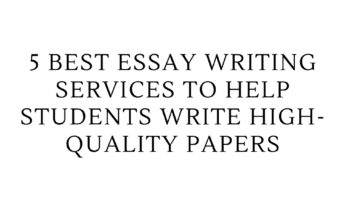In today’s fast-paced world, where information is abundant and topics range across a vast variety of subjects. Multiple stories can enrich your understanding of the topics. Whether you are delving into science, history, art, or personal development, approaching your topics or multiple stories can enrich your understanding and engagement. Stories have the power to illuminate complex ideas, offer diverse perspectives, and connect us on a human level.
If you have heard stories in your childhood, you will likely still remember them. You probably remember the message they had. It is the power of storytelling. Stories can explain complex topics easily and interestingly.
This article explores how embracing multiple narratives around your chosen topics can deepen your knowledge and appreciation.
Contents
- 1 How Do Multiple Stories Enhance Understanding of Topics?
- 2 Advantages of Exploring Your Topics | Multiple Stories
- 3 Topics That Benefit from Multiple Story Approaches
- 4 Enhancing Learning through Multiple Stories
- 5 Creating and Finding Your Topics | Multiple Stories
- 6 Multiple Stories and Personal Growth
- 7 Challenges and Considerations
- 8 Conclusion
How Do Multiple Stories Enhance Understanding of Topics?
Stories help us understand the world. Take the example of the stories of Egyptian gods, and how they tell us about the history of Egypt. In modern journalism, those journalist who convey their message with stories build a better connection with their readers. Teachers who use stories in explaining complex scientific theories can convey them easily to their students. Stories are not just for time pass; they are an effective tool for education.
Emotional Connection
The power of storytelling is reflected in how they build emotional connections. Stories are powerful in evoking emotions, which evoke memories. Just remember the last scene you remember from a TV serial or movie. Sometimes people feel connected to a story on a personal level, which makes them remember something for longer.
Example:
Learning about the impact of climate change through the story of the people who had to leave their area just because of pollution and increasing temperatures can create a stronger impression than the statistics of climate change and pollution.
Simplifying Complex Topics
Many people face the task of understanding complex topics. It was the problem that I faced during my studies in high school. So, I decided to use stories, and it was easier to memorize.
Example:
Take the example of a complex topic like quantum physics, and explaining it through thought experiments like Schrödinger’s cat makes it easier to understand and remember.
Storytelling in Business
Businesses are using storytelling to engage customers on a personal level. They are using stories to educate them about the values, mission, and goals of a company.
Example: Take the example of the “just do it” campaign by Nike that resonates with the audience. Instead of focusing on product features, they tell the stories of athletes overcoming adversaries and pushing their limits. These stories inspire the viewers to pursue their own goals.
Advantages of Exploring Your Topics | Multiple Stories
Focusing only a single narrative often presents a limited viewpoint. Multiple stories offer broader viewpoints and balanced perspectives.
Example:
Learning about the Pearl Harbor incident through varied accounts from soldiers, politicians, and civilians reveals the complexities of the subject. It is important to read the stories from both sides so you have enough data and information about the subject.
Fostering Critical Analysis
Diverse narratives or multiple stories foster critical thinking, helping readers recognize biases, different angles of interpretation. Just take the example of the Pearl Harbor incident, and you will understand the complexities by understanding different viewpoints.
Example:
Reading different perspectives on nine 11 allows the readers to get a nuanced understanding and encourages critical thinking about the events. By listening to different sides, readers can better understand the situation around the topic.
Cultural Diversity
Multiple stories expose the readers to different opinions from people of diverse backgrounds. It builds empathy and cultural sensitivity.
Example:
Just listen to the stories of heroism from different sides of the world. The concept of heroism is varied across the world. Comparing these heroes from one region of the world to the other can reveal societal values.
Topics That Benefit from Multiple Story Approaches
Whether it is science or society, almost all the issues can benefit from this approach. However, certain subjects can greatly benefit from this approach and provide richer insights.
Historical Events
Let’s talk about history. It is full of stories. From the beginning of the world, it has been multiple stories even about the beginning of this universe. There are stories of wars, victories, and defeats. History can be understood by personal, cultural, and national narratives. Understanding historical events through multiple story approaches can offer deeper understanding and insights.
Example:
The history of World War 2 can be understood from the stories of different people. For example, reading both the autobiographies of Adolf Hitler and Anne Frank can offer varied insights. Many authors, soldiers, and civilians have narrated the events of World War 2. Moreover, the story of the first landing on the moon can be understood by the stories of astronauts and journalists.
Social Issues
Multiple stories make it easy to understand social issues more deeply. It allows us to look at the situation from different angles and perspectives.
Example:
Think about checking the statistics of homelessness and then reading the stories of those experiencing it, policymakers, and other stakeholders. Exploring multiple stories will enhance the understanding of a social issue. Studying the accounts of community organizations can even enhance the understanding of this issue.
Scientific Discoveries
Science is not just about data; it is about the stories of discovery, ethical dilemmas, and human triumphs. Just think about the story of Edison and his struggles.
Examples:
Remember the days of COVID-19 and its vaccine development. It narrates the stories of those suffering from this pandemic and how the world collaborated. The development of the vaccine tells a story of human triumph, ethical debates, and international cooperation.
Business and Economy
It is not limited to the above-given topics only; business and economics also benefit from this approach. Understanding business and economy from different narratives provides insights into organizational growth, market strategies, and economic trends.
Take a look at how Pedrovazpaulo Business Consultant uses storytelling his Pedrovazpaulo Executive Coaching
Example:
Understanding the trade war between China and the United States from different personal accounts, business analyses, and government responses offers an all-inclusive view of the crisis.
Enhancing Learning through Multiple Stories
Incorporating multiple stories in the learning strategies can boost the learning process. This approach can enhance retention and engagement with any topic.
Narrative Method in Education
Stories can be used to make learning sessions fun and engaging. Stores surrounding different topics make lessons more engaging.
Example:
Teaching about bravery through real-life stories of famous warriors can help students get a better idea of what bravery is. In addition, teaching mathematical concepts through real-life problem-solving stories can help students understand subjects like mathematics.
Encouraging Critical Analysis
Focusing on multiple stories can encourage critical thinking. It can make the audience think critically.
Example: Take the example of comparative narratives in literature class and how they encourage students to identify themes, styles, and biases.
Creating and Finding Your Topics | Multiple Stories
If you want to explore Your Topics | Multiple Stories fully, then actively seek out multiple stories.
Diverse Media Consumption
Don’t rely on a single media source for stories. Use books, documentaries, podcasts, and interviews.
Example:
Watching documentaries, reading books, listening to podcasts, and interviews on a certain topic can expose you to diverse narratives. For example, reading and listening about climate change can provide a broader perspective.
Engaging with Communities
Join discussions, forums, communities, and local groups related to your topic. That is even easier on Google. You search for your topic and click on “Forums” to find discussions in the forums related to your topic. Forums are places where users share their experiences, for example, you can find personal stories and practical self-help advice. If you want to become a writer, you can find many forums where writing-related topics are discussed. Read about the Social Media Girls forum.
Reflective Storytelling
Take the first step and write your personal story on a topic. Then encourage others to share their stories as well.
Example:
If you are a working woman, write about workplace harassment and encourage other women to share their stories as well.
Multiple Stories and Personal Growth
It is undeniable that multiple stories help us to understand a topic better. But, there is another advantage of this approach: personal development. This way of engaging with multiple stories contributes to personal development.
Empathy Building
If you read diverse stories, you build empathy. It is an advantage of this approach.
Example: Read the stories of people from different backgrounds, and it will broaden your emotional intelligence.
Enhanced Communication Skills
It helps you articulate thoughts. Reading different stories about a single topic can help you form more compelling thoughts.
Lifelong Learning
Be curious about the world around you. Continue exploring as it keeps the mind active and curious.
Example: Make the habit of exploring new stories about artificial intelligence, as this can lead to personal enrichment.
Challenges and Considerations
Information Overload: Engaging with too many stories can become overwhelming. So, it is recommended to select stories that offer unique insights.
Confirmation Bias: There is a risk of falling for confirmation bias. Sometimes you may select stories that conform to your existing beliefs. Avoid this and engage with multiple stories that challenge your existing viewpoints.
Reliability Issues: Remember that not all stories are reliable. So, you need to verify information from credible sources.
Conclusion
Your Topics | Multiple Stories is a powerful approach to deepen your understanding, build empathy, develop communication skills, and foster empathy. Diverse narratives enrich your knowledge and expose you to new perspectives.







